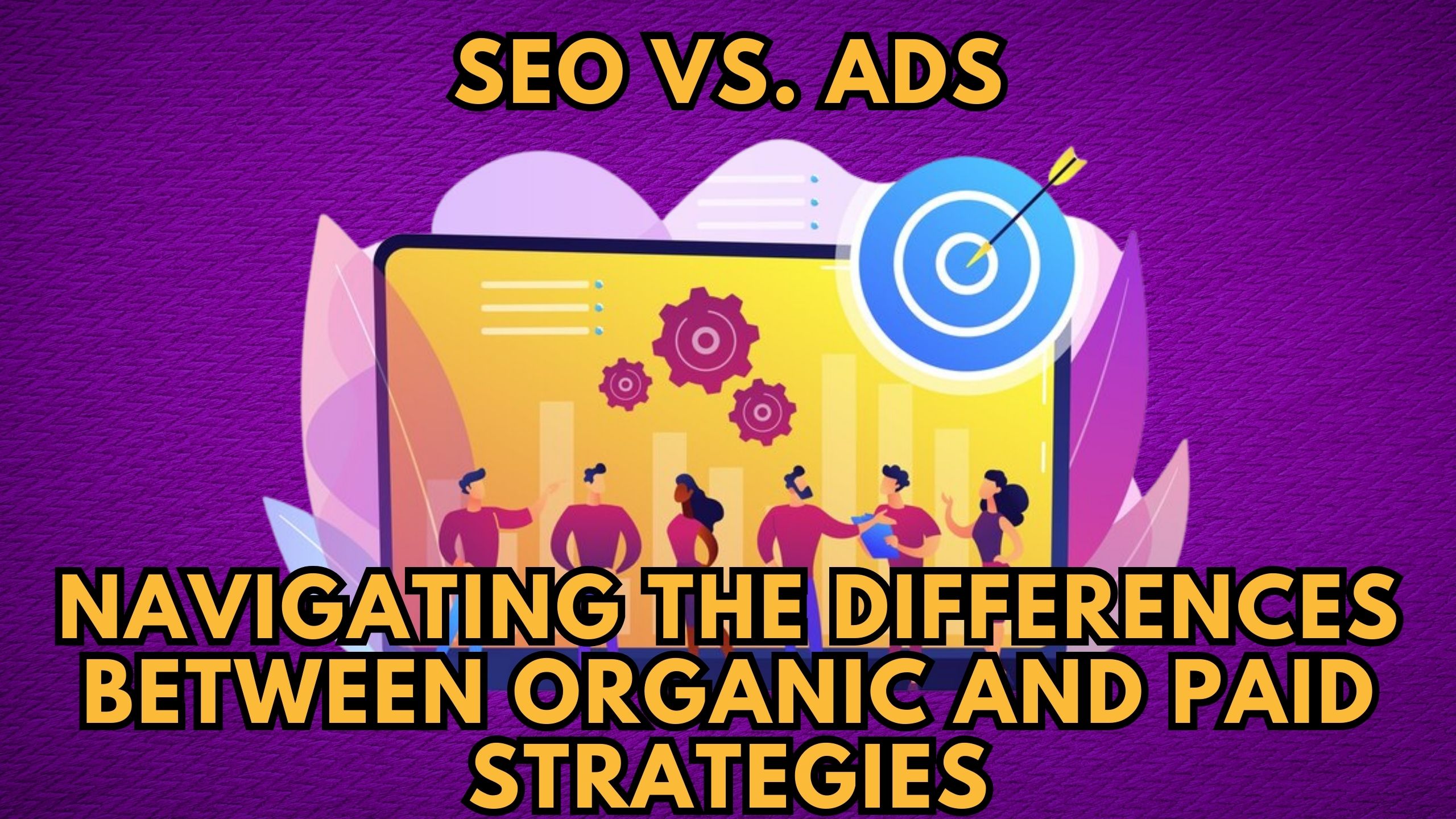SEO vs. Ads: Navigating the Differences Between Organic and Paid Strategies
- Conversational Marketing Software SEO Software Affiliate Marketing Software Marketing Tools


SEO vs. Ads: Navigating the Differences Between Organic and Paid Strategies
In the ever-evolving landscape of digital marketing, businesses often grapple with the decision of investing in Search Engine Optimization (SEO) or Paid Advertising (Ads) to enhance their online visibility. This comprehensive guide aims to unravel the intricacies of SEO and Ads, shedding light on their distinctive features, benefits, and when to deploy each strategy. As businesses strive to optimize their online presence, understanding the nuanced differences between organic and paid approaches becomes paramount.
Unveiling the Essence of SEO
What is SEO?
SEO is the art and science of enhancing a website’s visibility on search engines like Google, Bing, or Yahoo. It involves optimizing various elements, such as content, meta tags, and backlinks, to improve a website’s ranking in organic search results.
Key SEO Considerations:
Content Optimization: Crafting high-quality, relevant content is crucial. SEO focuses on creating content that aligns with user intent, utilizing keywords strategically.
Technical SEO: Ensuring a website’s technical aspects, such as site speed, mobile-friendliness, and secure connections, are optimized for search engines.
Link Building: Building authoritative backlinks is a cornerstone of SEO. Quality links from reputable sites contribute to higher search engine rankings.
Relevant SaaS Products for SEO:
- Ahrefs: A comprehensive SEO tool providing insights into competitors’ strategies, keyword research, and backlink analysis. Ahrefs empowers businesses to optimize their content effectively.
- SEMrush: Known for its versatility, SEMrush offers features like keyword tracking, site audit, and competitor analysis. It aids businesses in identifying SEO opportunities and refining their strategies.
- Moz: Moz offers a suite of SEO tools, including keyword research, link building, and site audits. It’s a go-to platform for businesses aiming to boost their organic search performance.
- Yoast SEO: A WordPress plugin that streamlines on-page SEO. Yoast SEO helps businesses optimize their content for search engines, ensuring maximum visibility.
- Google Analytics: While not exclusively an SEO tool, Google Analytics provides valuable insights into website performance, user behavior, and traffic sources. It’s essential for refining SEO strategies based on data.
Decoding the Dynamics of Paid Advertising
What are Ads?
Paid Advertising involves businesses paying for their content to be displayed prominently on search engine result pages or various online platforms. This method offers instant visibility but requires a budget for ad spend.
Key Ad Considerations:
Targeted Audience: Ads allow precise audience targeting based on demographics, interests, and online behavior.
Immediate Visibility: Ads appear at the top of search results, providing instant visibility to potential customers.
Budget Control: Advertisers have control over their budget, allowing them to set daily or campaign-specific spending limits.
Relevant SaaS Products for Ads:
- Google Ads: Formerly Google AdWords, it is the leading platform for running online ads. Google Ads provides a wide reach and diverse ad formats to suit various business goals.
- Facebook Ads Manager: The go-to platform for advertising on Facebook and Instagram. Facebook Ads Manager offers detailed audience targeting and diverse ad formats.
- AdRoll: AdRoll specializes in retargeting ads, helping businesses re-engage website visitors. It’s a powerful tool for maximizing the impact of display advertising.
- SpyFu: SpyFu allows businesses to spy on their competitors’ paid search strategies. It provides insights into keywords, ad copy, and budget allocation.
- WordStream: WordStream simplifies paid advertising with its PPC management platform. It helps businesses optimize their ad campaigns for better performance.
Conclusion: Striking the Right Balance
In conclusion, the choice between SEO and Ads hinges on various factors, including budget, timelines, and marketing objectives. SEO offers sustainable, long-term results, while Ads provide immediate visibility. Often, a balanced approach that integrates both strategies yields optimal results, ensuring a comprehensive digital marketing strategy.
Unlock the Power of Your SaaS Stack with Subscribed.fyi!
Explore Subscribed.fyi – your go-to solution for understanding, comparing, and managing your SaaS stack. Sign up today to access exclusive member-only deals, saving you over $100,000 per year. Effortlessly manage all your subscriptions with Subscribed.fyi, empowering you to make informed decisions about SaaS tools.
Relevant Links:
- Ahrefs
- SEMrush
- Moz
- Yoast SEO
- Google Analytics
- Google Ads
- Facebook Ads Manager
- AdRoll
- SpyFu
- WordStream





